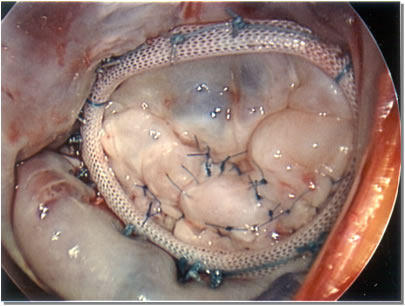Tricuspid Valve Repair Surgery
Written By: Adam Pick, Patient Advocate, Author & Website Founder
Medical Expert: Patrick McCarthy, MD (Northwestern Medicine)
Page Last Updated: May 10, 2025
The tricuspid valve is found on the right side of the heart. It usually, but not always, has three tissue flaps and is positioned between the right ventricle, on the lower part of the heart and the right atrium, in the upper part the heart.
The valve also has papillary muscles that support it. The tricuspid valve can be subject to all kinds of abnormalities, including regurgitation, where the blood flows backwards.
To help you learn about tricuspid valve repair surgery, I filmed this video with Dr. Patrick McCarthy, the Executive Director of the Bluhm Cardiovascular Institute at Northwestern Memorial Hospital in Chicago, Illinois, who specializes in tricuspid valve surgery.
Common Tricuspid Valve Defects
Some people are born with defects in their tricuspid valve, like tricuspid atresia. This is where the valves are deformed or absent. Without it, blood can’t flow from the right atrium down into the right ventricle. Diseases like rheumatic fever can also damage the tricuspid valve.
Tricuspid atresia is present at birth and will need to be corrected by surgery, as the condition prevents blood from getting to the lungs. The surgery happens shortly after the baby is born, when a shunt is placed in the heart. The baby is then discharged but has to take medications till the second part of the surgery is performed, usually when the baby’s about three months old. This part of the surgery is called the Hemifontan procedure. During this operation, the surgeon connects some veins that carry deoxygenated blood to the baby’s pulmonary artery. This procedure is then followed by the Fontan procedure, where the rest of the veins are attached to the pulmonary artery. This surgery happens when the child is about one and half to three years old.
In tricuspid regurgitation, the valve doesn’t shut the right way, often because the right ventricle swells for some reason. A valve disorder on the left side of the heart can also cause tricuspid regurgitation, or worsen it. Sometimes doctors choose not to treat tricuspid regurgitation if the patient is asymptomatic. If the patient is having symptoms like shortness of breath, edema, fatigue and weakness and has developed pulmonary hypertension, then surgery might be performed to replace or repair the tricuspid valve. But even this surgery is usually done only when there’s another procedure being performed on another heart valve, like the mitral valve.
What Happens During Tricuspid Valve Repair Surgery?
During tricuspid valve repair surgery, the surgeon might shorten the valve’s papillary muscles. This will cause the valves to close properly.
For patients with tricuspid regurgitation, the surgeon may have to insert an annuloplasty band or ring to correct valve dysfunction. This ring, which is stitched into the heart, reinforces the annulus thereby enabling the leaflets to operate normally.
A tricuspid valve repair provides several advantages to replacement procedures (e.g. avoiding blood thinners) and provide a more durable solution as the patient's tissue is retained during the surgery.
 Annuloplasty Ring
Annuloplasty Ring
Having to actually replace the valves is rare, but if a replacement must be done the artificial valves will most likely be made out of plastic, metal or carbon. These materials are quite strong, but blood will stick to them and may form dangerous clots. Therefore, the patient will have to take anticoagulants for as long as they live. Other valves come from heart donors, from animals and sometimes from the patient's own tissue. Blood doesn’t stick to these valves, but they don’t last as long and might need to be replaced about once a decade. They’re used mostly in older patients as they don’t even last ten years in young patients.
These operations are performed when the patient is under general anesthesia and attached to a heart-lung machine, because the heart has to be stopped and cooled down for the operation to be performed. After the valve is replaced or repaired the heart is revived.
The surgery takes an average of about two to four hours and the patient might have to stay in the hospital for 5 to 7 days, including time in the ICU, also known as the intensive care unit. As this is major heart surgery, recovery could take a while. Most people need to stay home from work for about a month to several months depending on their recovery.
You Might Also Like
To help you learn more about tricuspid valve disease, here is additional information to educate and empower you:




